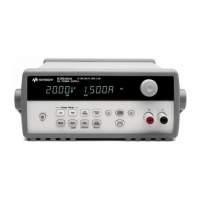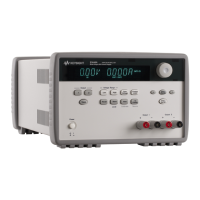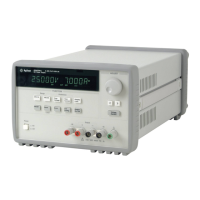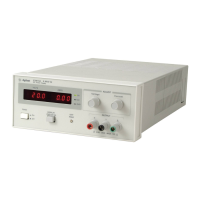
Do you have a question about the Agilent Technologies E3642A and is the answer not in the manual?
| Number of Outputs | 2 |
|---|---|
| Voltage Resolution | 1 mV |
| Current Resolution | 1 mA |
| Programming Accuracy (Voltage) | 0.05% + 10 mV |
| Interface | GPIB, RS-232 |
| Storage Temperature Range | -40 to 70 °C |
| Line Regulation (Voltage) | 0.01% + 2 mV |
| Programming Accuracy (Current) | 0. 2% + 5mA |
| Readback Accuracy (Current) | 0.2% + 5mA |
| Operating Temperature Range | 0°C to 55°C |
Initial checks to ensure the power supply is ready for use.
Procedures to verify basic voltage and current functions without load.
Troubleshooting steps for power supply startup issues.
Procedure to change the power supply's input voltage setting.
Instructions for adjusting the power supply's carrying handle.
Steps for installing the power supply into a standard 19-inch rack.
Important safety guidelines and EMC requirements for operation.
List of available options and accessories for the power supply.
Overview of the power supply's features and capabilities.
Procedures for initial inspection, cooling, location, and connections.
Details on connecting loads, current ratings, and voltage drops.
Description of front-panel keys and their functions.
Step-by-step guide for setting up constant voltage output.
Step-by-step guide for setting up constant current output.
Procedure to set up GPIB and RS-232 interfaces.
How to save and recall power supply configurations.
Steps to set OVP levels, check operation, and clear conditions.
Methods to enable or disable the power supply output.
Topics like state storage, self-test, and firmware revision query.
Information on connecting and configuring the GPIB interface.
Information on connecting and configuring the RS-232 interface.
Overview of calibration security, count, and message features.
Summary of SCPI commands for programming the power supply.
Basic techniques for programming the power supply remotely.
Details on low-level commands for output control.
Information on selecting trigger sources and managing triggers.
Commands for display, output, beep, error, version, and remote communication.
SCPI commands for saving and recalling power supply states.
SCPI commands for calibration procedures and security.
SCPI commands for setting interface options.
Explanation of event, enable, and status byte registers.
Commands for querying error queues and status conditions.
Overview of the SCPI language and its tree structure.
Explanation of syntax conventions for SCPI commands.
Description of numeric, discrete, boolean, and string parameter types.
Information on IEEE-488 standard conformance.
List and descriptions of execution errors encountered during operation.
List and descriptions of errors indicating self-test failures.
List and descriptions of errors occurring during calibration.
C/C++ example program for remote control using VISA.
Excel macro example for controlling the power supply.
Basic design model and operation of series regulated power supplies.
Explanation of ideal voltage/current supply behavior and operating modes.
Description of unregulated operation and its causes.
Explanation of normal mode and common mode noise.
Methods for increasing output voltage and current using series/parallel connections.
Factors affecting output voltage change speed during remote programming.
Warranted performance parameters in the specified temperature range.
Non-warranted performance descriptions determined by design or testing.
Checklist of items before returning the power supply for service.
Information on standard repair and express exchange services.
Guidelines for securely packing the instrument for shipment.
Guidelines to prevent ESD damage during handling and service.
Recommendations for repairing surface mount components.
Instructions for locating and replacing the power-line fuse.
Checklist of common failures and troubleshooting tips.
Procedures for performing power-on and complete self-tests.
General steps for disassembling the power supply.
List of recommended instruments for performance verification.
Recommendations for ensuring proper test conditions and accuracy.
Tests to verify operation and compliance with specifications.
Methods for setting up tests and performing measurements.
Tests to verify CV programming, readback, load, and source effects.
Tests to verify CC programming, readback, load, and source effects.
Procedure to measure common mode current noise.
Templates for recording CV and CC performance test results.
Information on calibration interval and unsecuring the supply.
Step-by-step guide for front panel voltage, OVP, and current calibration.
List of common error messages encountered during calibration.
Information on ordering replacement parts and schematics.











